In Germany, Hermann, a sweet sourdough, is probably one of the most common forms of sourdough. It is made from wheat flour and is mostly used for baking cakes. Since the 1970s, it has been passed around like a chain letter. Around 1980, the time of the German peace and ecology movement, a letter with care instructions was added when giving it away.
Jump to recipeIn the United States, this dough is known as Amish Friendship Bread. The cake-like bread with cinnamon baked with it is traditionally distributed to friends or needy people. The American version tastes a little sweeter than a dough made from Hermann. For both recipes you need dry yeast for baking.
Is it possible without added yeast?
I'm more into wild yeast, so I tried to prepare a sweet dough without purchased yeast. With success! My sweet, wild yeast dough I call Hermione, or Hermine in German, and it is fabulous for baking cakes. Or for sweet breads and rolls.
Sweet sourdough, Harvard and science
During my Harvard studies to become a fermentista, I also had to prepare a sourdough. Naturally, this involved scientifically analyzing and understanding the principles behind it. I took various measurements of the dough every day. If you are also interested in such things, then do a simple measurement and find out the measurable acid development of the dough. For this you need pH strips* to find out the pH of the dough. Hold one side of the strip in the dough for 10 seconds and read the displayed value. Do not forget to write down your observations.
What do you notice?
Baking with sweet sourdough
I love Hermione especially for cakes with slightly alcoholic fermented fruits and spices. The dough rises really well, and makes a very very tasty, sweet cake. All without added yeast!
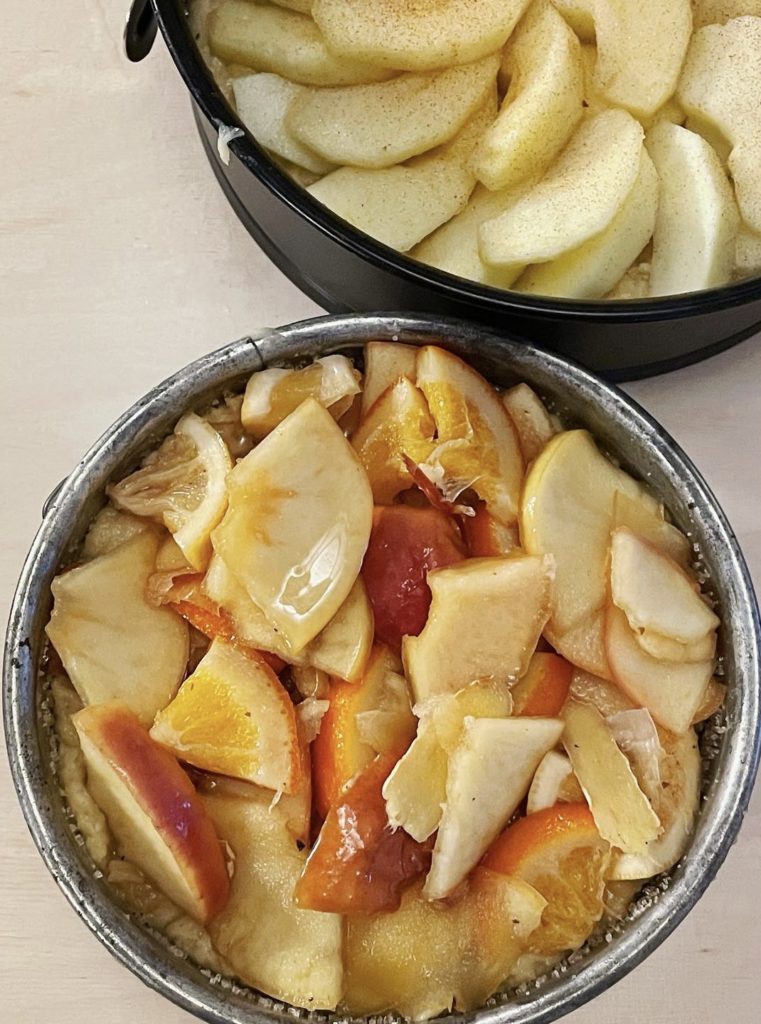
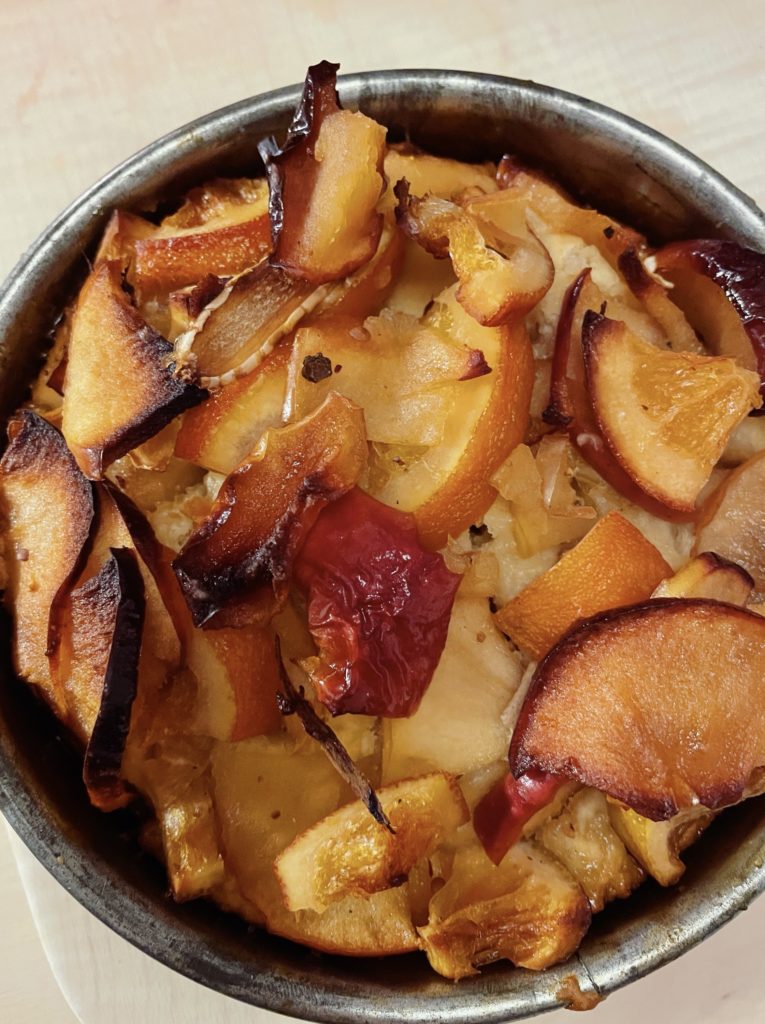

* I buy my test strips here https://www.hobbybrauerversand.de/PH-Messstreifen-10-Stueck-pH-38-55?fml=1. The scale is suitable for all types of ferments and they are very reliable for home use.
If you order through the linked recommendation, a share of the purchase price goes to me (at no extra cost to you, you know the principle under the name Affiliate Links). I take the commission as your appreciation for my work as a writing fermentista and thank you if you trust my recommendations.


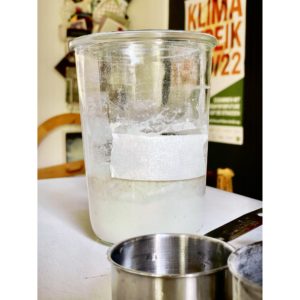
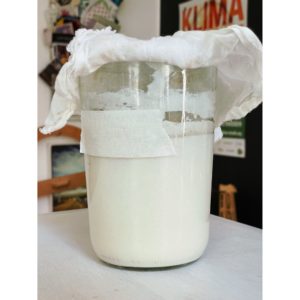
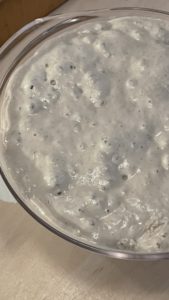
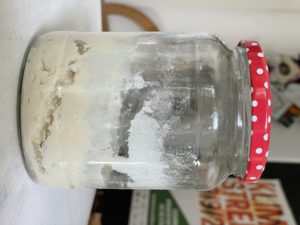
Kann man den auch glutenfrei ansetzen?
Liebe Grüße, Harald Schieber
Hej Harald,
das habe ich nicht ausprobiert. Mein (sehr leckeres) glutenfreies Brot findest Du hier https://fermentation.love/einfache-rezepte/buchweizenbrot-glutenfrei/, der Teig wird auch kurz angesäuert, und es kommt ohne zugesetzte Hefe aus.
Gutes Gelingen!
Katsu
Hallo!
Ich finde Deine Seite(auch das Fermentieren) sehr interessant. Gebe aber zu, dass ich da skeptisch bin und den Produkten nie ganz trauen würde….
Allerdings backe ich fast ausschließlich mit einem selbstgezogenen Sauerteig-seit nun mehr 15Jahren 🙂
Habe jetzt eine Frage zu Hermione:
Ist es ein Unterschied, wenn der Sauerteig selbst süß ist, oder könnte man einfach den normalen Sauerteig in einem Kuchen verwenden?
Will sagen: wenn ich Brot backe nehme ich zu dem angesetzten Sauerteig normalerweise
Mehl, Wasser, etwas Honig u Salz.
Stattdessen würde ich Mehl Milch mehr Honig/Zucker und kaum/kein Salz nehmen.
Oder schmeckt süßer Sauerteig anders?
Bin gespannt, wie der Unterschied ist.
Viele Grüße
Michaela
Hej Michaela,
lustig, da geht es mir genau umgekehrt, ich traue dem, was die Industrie mir verkaufen will, nicht recht über den Weg und mache das meiste selber.
Der süße Sauerteig auf Weizenbasis mit Milch ist milder, weniger sauer, und er ist auf jeden Fall sehr aktiv – ob jetzt aktiver, hängt sicherlich von Deiner persönlichen Kultur und Teigführung ab. Gebäck mit anderem Sauerteig schmeckt meiner Familie nicht gut, Gebackenes mit Hermione jedoch sehr. Seien es Waffeln, Kekse, Pfannkuchen oder Kuchen.
Probier doch mal selber, eine Hermione zu züchten und berichte dann, was Du schmeckst.
Gutes Gelingen!
Katsu
Super!
Vielen Dank für Deine schnelle Antwort. Ich werde Hermione probieren. Mein Sauerteig ist ein aktives Kerlchen. Ich werde mal von meinem was abnehmen und versuchen, ihn umzufunktionieren. Mal schauen, ob’s klappt. Mit hellem Mehl ist er übrigens immer schneller. Wenn ich z.B. Weißbrot mache. Lasse ich ihn über Nacht im Kühlschrank gehen. Das Brot wird dann sehr locker, aber nicht sauer!
Bin auf das Milch-/Zuckerexperiment gespannt!
Ja genau, das Mehl hat einen großen Einfluss auf die Aktivität. Lass es Dir schmecken!
Es tut mir leid, aber das Rezept ist unverständlich. Bei den Zutaten ist bei der Zuckertransformation und der Michtransformation von Anstellgut die Rede. Was ist Anstellgut?
Bei der Zuckertransformation heißt es: Zuerst den Starter hinzufügen. Wieviel? Alles? Nach 5 Tagen hat man ja schon über 500 g Starter. Wenn ich dann nur 50 gr. Mehl hinzufüge erhalte ich niemals einen festen Teig.
Dieselbe Unklarheit bei der Milchtransformation.
Hej Albert,
am besten, Du liest das ganze Rezept nochmal konzentriert durch, dann ist es sicher auch für Dich zu verstehen. Die Mengen zum Beispiel stehen oben bei den Zutaten. Man muss da ein bisschen mit den Augen hin- und herspringen, wie bei Rezepten üblich.
Gutes Gelingen!
Katsu
Hallo liebe Katsu,
ich bin gerade dabei eine Hermione für eine Colomba die Pasqua (italienisches Ostergebäck) anzusetzen und heute ist die Zuckertransformation dran. Jetzt habe ich mich gefragt, ob das Anstellgut weiterhin alle 12 Stunden gefüttert werden muss, solange es nicht für die Zucker- und Milchtransformation verarbeitet wird. Kann der Ansatz sonst “umkippen”?
Lieben Gruß und schönes Osterfest.
Laura
Hej Laura,
so eine Colomba würde mir wohl auch schmecken, vielleicht ersetzt sie dieses Jahr den traditionellen Osterhasen – oder ergänzt ihn.
Wenn du dein Anstellgut nicht weiter transformieren möchtest, kannst du es wie jeden anderen Sauerteig auch behandeln und wöchentlich anfüttern. Sobald du die Transformation beginnen möchtest, sollte er jedoch sehr aktiv sein, wahrscheinlich muss er dafür 1-2 Tage gefüttert werden.
Gutes Gelingen, und schönes Wochenende!
Katsu
Hallo, ich habe so einen Kettenbrief mit Vatikanbrot bekommen, so ähnlich wie Hermione 😅, und frage mich ob man da was falsch machen kann? Der Teig soll laut meiner Anleitung nicht in den Kühlschrank. Kann der Teig schlecht werden? Und ist es egal, wenn man den Teig mal einen Tag später füttert? Vielen Dank und liebe Grüße ☀️
Hej Dani,
am besten behandelst du ihn so, wie es im Brief steht. Einen Tag später füttern sollte er abkönnen, wenn er stabil ist.
Gutes Gelingen!
Katsu